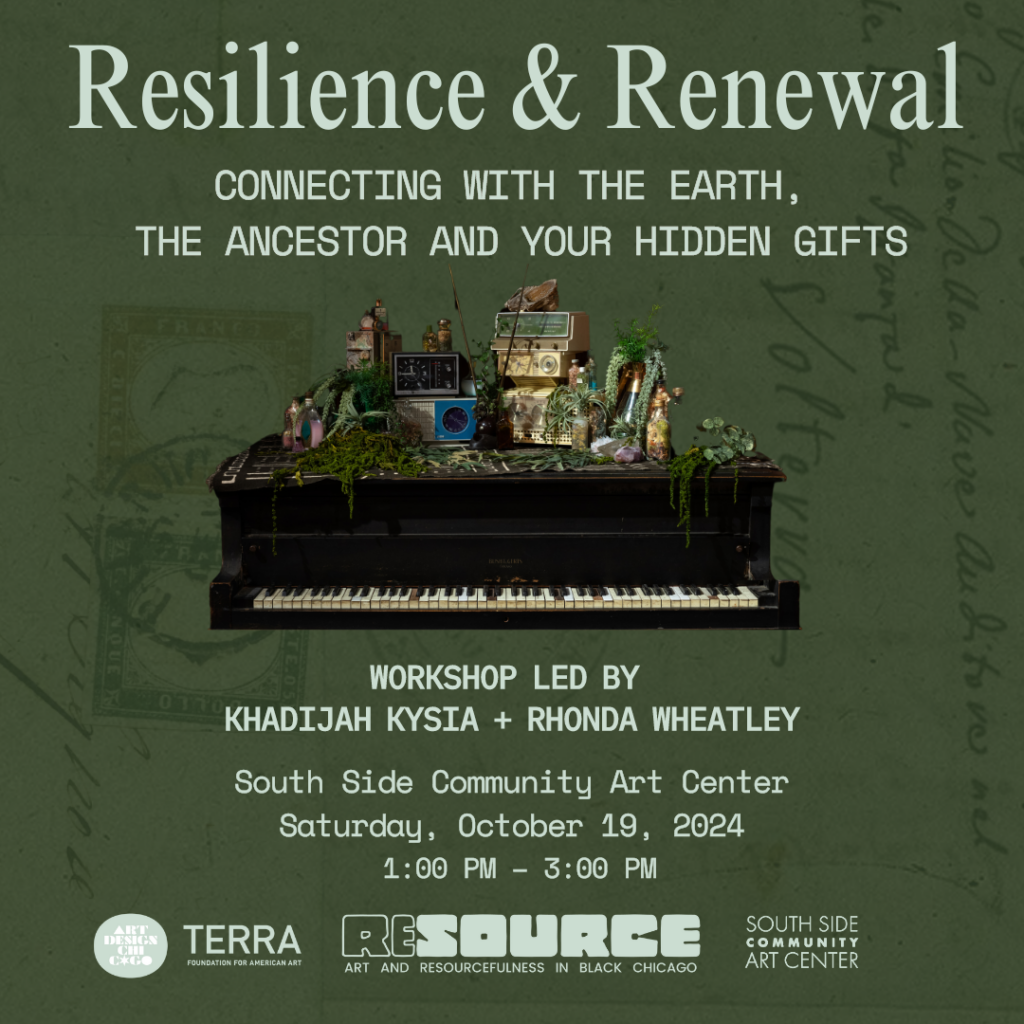Join Khadijah Kysia and Rhonda Wheatley for this hands-on workshop to explore and strengthen our resilience—our brilliance, our ability to make a way out of no way, and our capacity for self-renewal, body, mind, and spirit. Khadijah, a Doctor of Acupuncture and Oriental Medicine, will provide an interactive primer on herbs involving taste and touch. Rhonda, a multimedia artist and energy worker, will share tools and practices for connecting with ancestors, often a source of our resilience; for connecting with the earth; balancing our energies; and calling forth our hidden gifts. She’ll facilitate a guided meditation, discuss crystals, consult the tarot, and provide writing exercises. Bring a journal and an open mind. You are welcome to participate at your level of comfort.

This event has passed.
Resilience & Renewal: Connecting with the Earth, the Ancestor and Your Hidden Gifts
October 19
@
1:00 pm
-
3:00 pm


